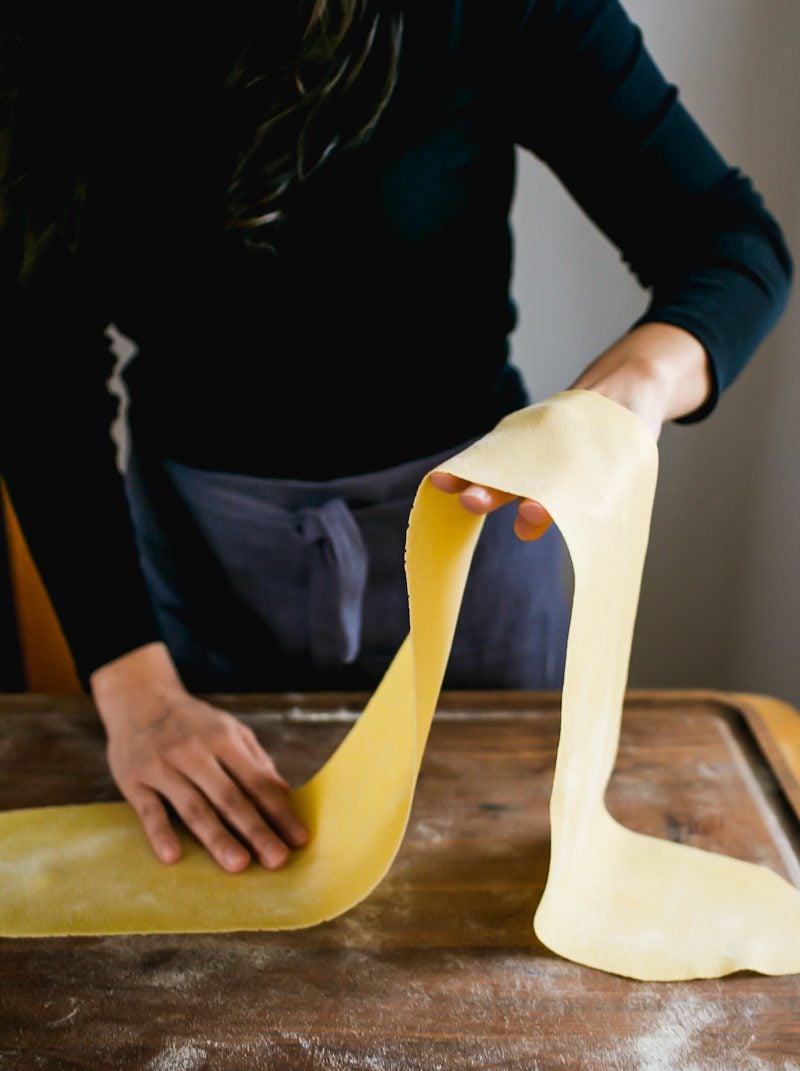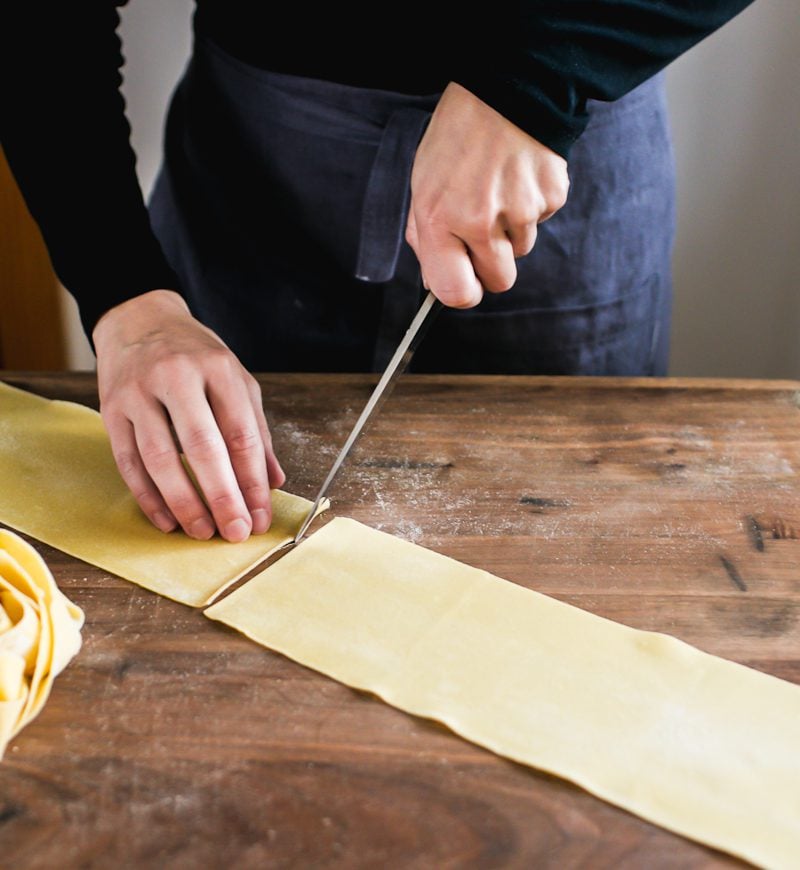How to Dry Lasagna Noodles
Line (2) wire cooling racks with kitchen towels. Arrange semolina-dusted lasagna noodles on top in a single layer. It’s critical that there be air movement beneath the lasagna noodles. Let air-dry, at room temperature, for up to 24 hours. The exact drying time will vary according to season (i. e. faster in winter, slower in summer). When the lasagna noodles break cleanly in half, they are completely dry. Store in an airtight container for up to 1 month.
Step #1: Make Pasta Dough
- There are several ways to make fresh pasta dough. The food processor method is the fastest. To accomplish this, place the flour, eggs, and olive oil in a food processor that has a metal blade attached. Process to form dough, about 15-20 seconds. After removing to your work surface, cover for five minutes with an overturned bowl.
- Form dough into a ball by kneading it for one to two minutes (don’t worry about technique, the food processor takes care of most of the kneading for you), cover again, and let rest for thirty to sixty minutes to allow the gluten to relax. In the following step, use this time to set up your workstation.
Tip: No food processor? No problem. For detailed directions and a video on making pasta dough by hand, see Beginner’s Guide to Fresh Homemade Pasta Dough.
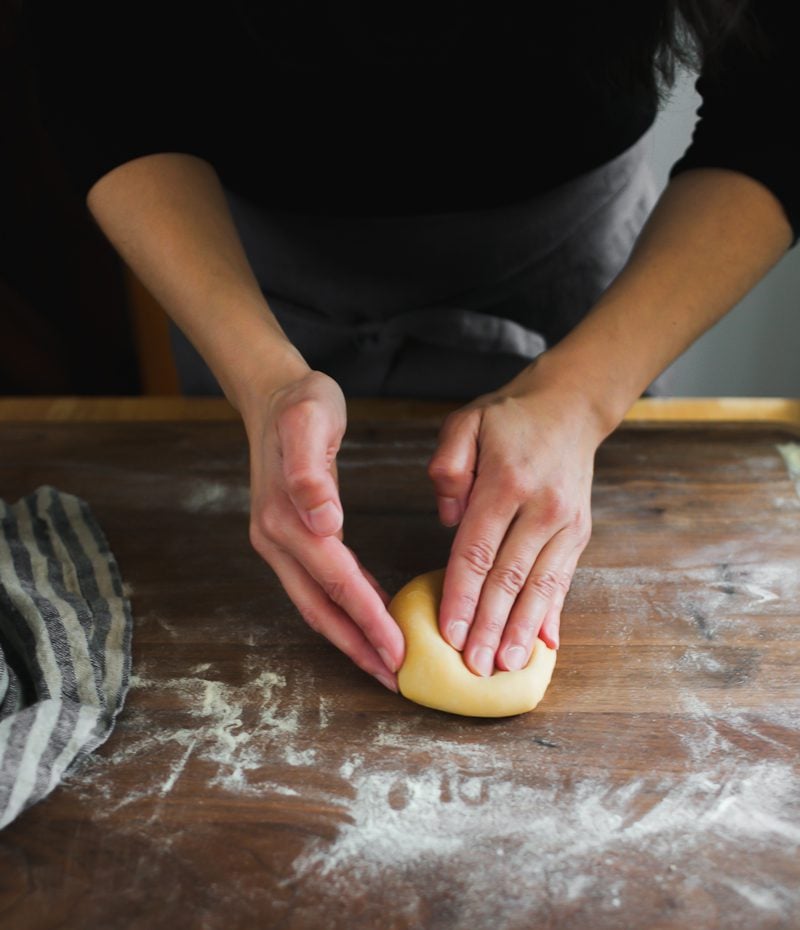
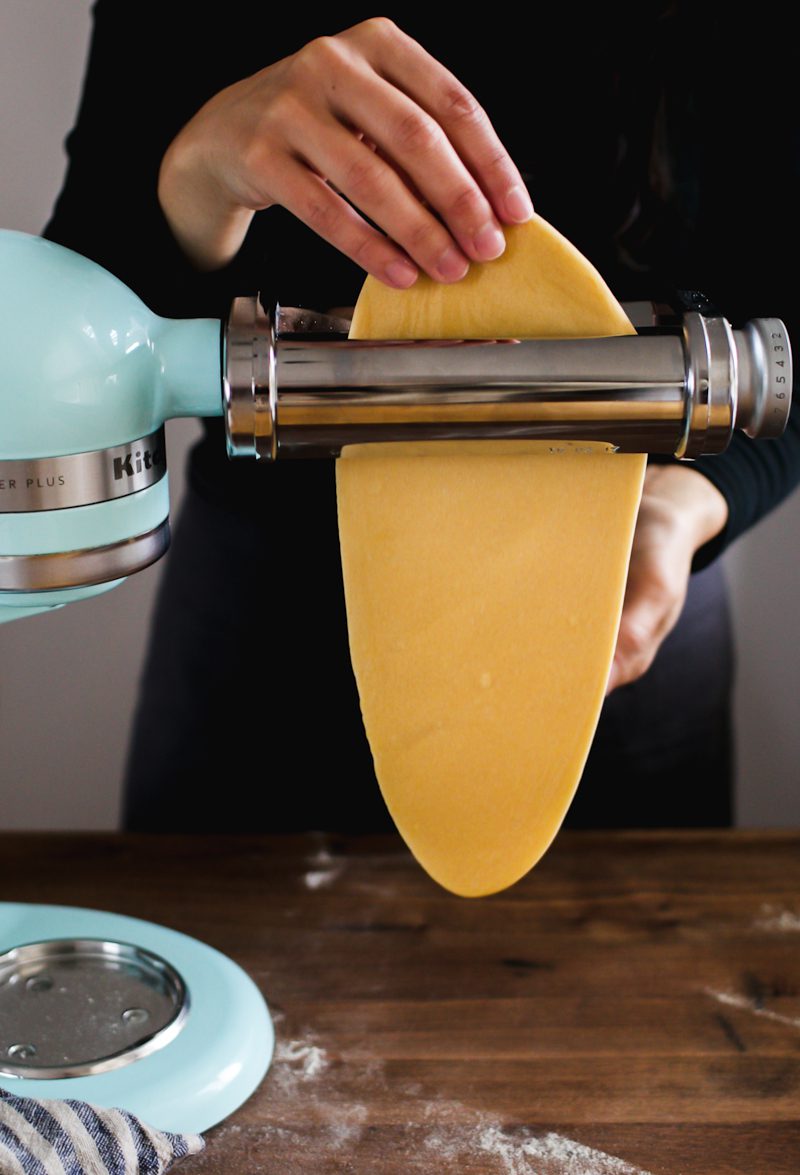
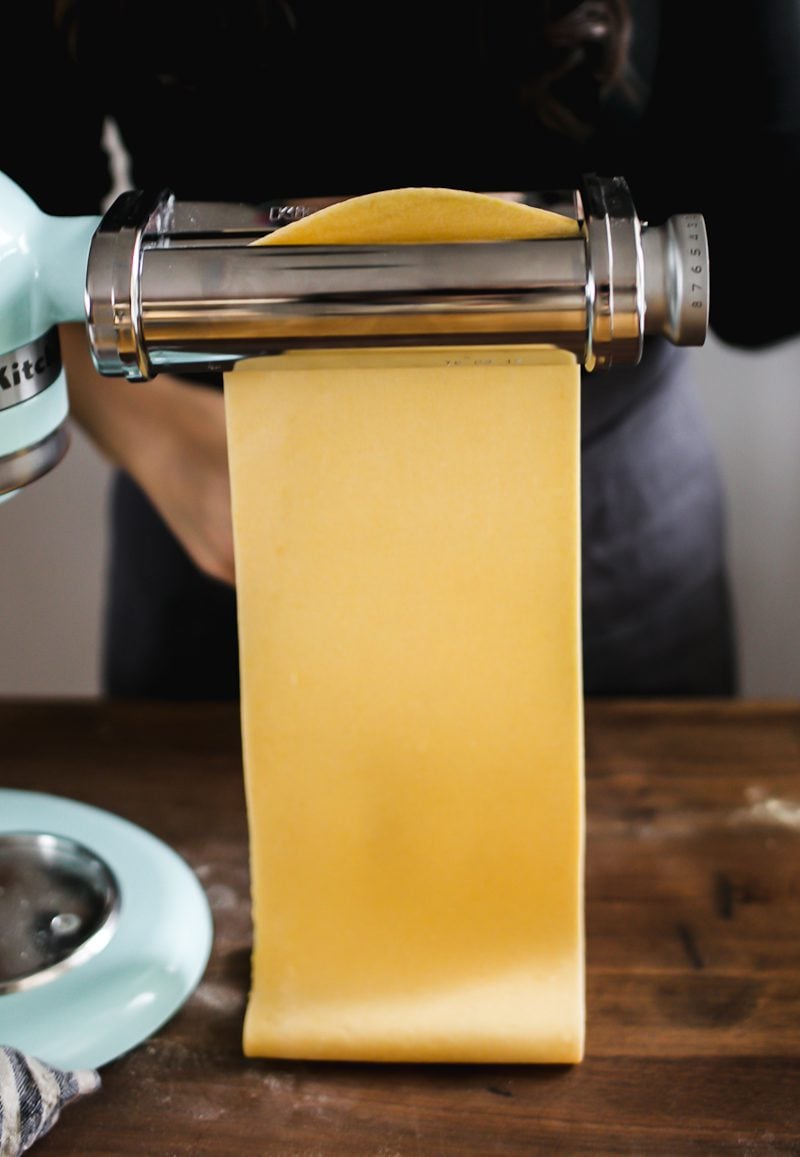
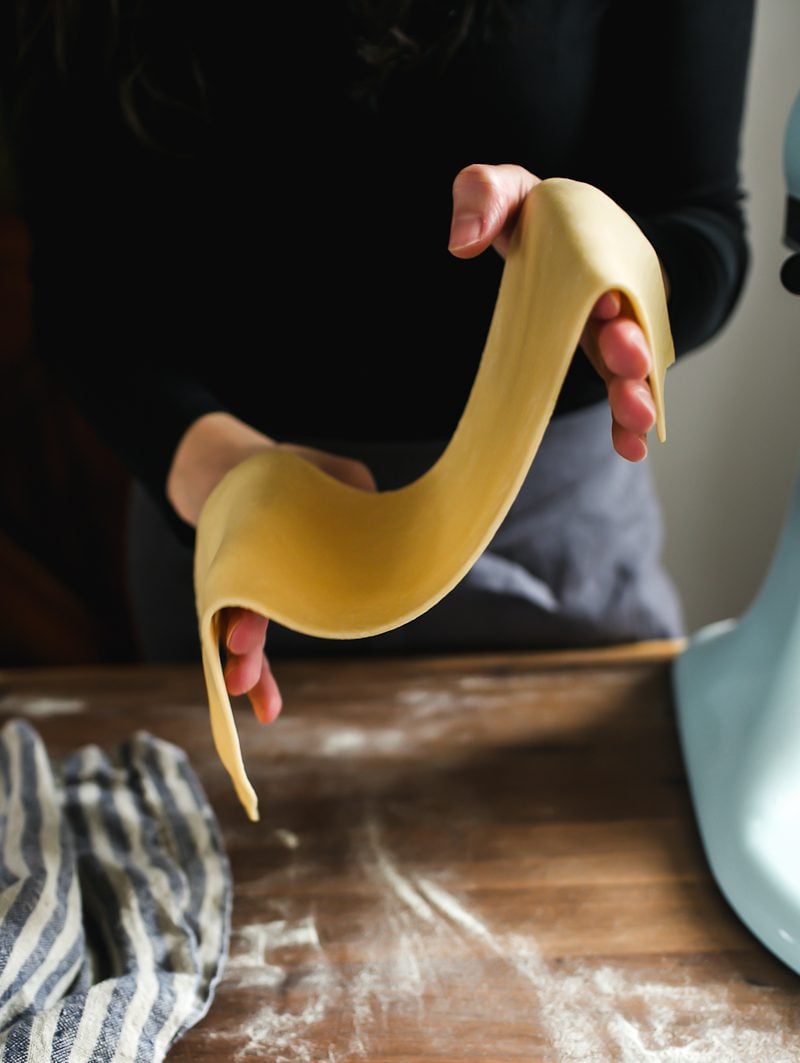
Step #2: Roll Dough Into Sheets
Before you begin, set up your work station (no exceptions!): Find a large, clutter-free work space to spread out (I use the kitchen table). Your pasta sheets are going to be long! Dust your work surface and pasta machine with semolina flour to prevent sticking. Line a sheet pan with parchment paper to fit the inside dimensions of your pan, no clunky overhang. Cut 4 additional pieces to layer in between the lasagna sheets as you roll them out; set aside.
- Cut the pasta dough into 4 equal pieces. Roll out one piece of dough to make it the width of your pasta maker; it should be about 6 by 8 inches long. Cover or rewrap the other pieces to prevent them from drying out.
- Send the disc through the roller on the widest/lowest setting. This is “#1” on the Kitchen Aid attachment. Send it through a second time.
- Continue to roll the dough through settings #2-4 (2x on each setting) until the pasta sheet is slightly translucent and you can see your hand underneath. For even thinner noodles, you can go up to setting #5. Now, you’re ready to make lasagna noodles.
